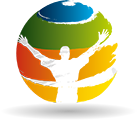
Until very recently, impact sensors - accelerometers measuring the forces which, when transmitted to the brain, cause sports-related concussions - were only used by scientists in conducting research. The last several years, however, have seen a growing number of companies introduce to the consumer market the first generation of impact sensors intended for real time monitoring of impacts to the heads of athletes in actual games and practices.
As is often the case with new technology-based products, the sensors in initial use at some colleges, and by a small but growing number of high schools around the country - including the football program at Newcastle High School in Oklahoma featured in the new PBS documentary, "The Smartest Team: Making High School Football Safer," - are still relatively expensive, and they are just now being tested extensively under real world conditions.
As a result, only time will tell whether they will fulfill the promise that many in the concussion community see them as having, although I, for one, think they will eventually revolutionize the way in which athletes are identified for remove-from-play screening on the sports sideline.
Since I began writing several years ago about the use of impact sensors as a technological "end around" the problem of chronic underreporting of concussions - and especially since "The Smartest Team" began being broadcast widely on PBS stations around the country in the fall of 2013 - I have been getting a lot of questions about them.
Fortunately, as result of my first-hand experience, working closely the past two football seasons with sensor manufacturers and the Newcastle football program, and from covering the concussion beat, along with a team of experts and staff journalists, for the past thirteen years, I believe MomsTEAM and I are in a unique position to explain just what impact sensors are all about.
To help parents, coaches, athletic directors, booster clubs, and sports program administrators understand what this cutting-edge technology does - and, just as importantly, what it doesn't do, here are answers to the questions MomsTEAM is most frequently asked about impact sensors:
Question: What are impact sensors?
Answer: Impact sensors are small, highly sophisticated electronic devices designed to measure and, in many cases, record in real time the number and force of impacts athletes sustain during games or practices. Most sensor systems send impact data wirelessly via Blue Tooth connection to a dedicated monitor, iPhone, iPad or laptop on the sports sideline. In some products, the sensor triggers an audible or visual alarm to alert sideline personnel to a high impact hit.
Question: What are impact sensors designed to do?
Answer: While impact sensors take a number of different forms (ie. installed inside or on the outside of a player's helmet, embedded in a mouth guard, helmet chin strap, skull cap, head band, or ear bud, for instance), all are essentially designed to do the same thing: alert coaches, athletic trainers, team doctors, other sideline personnel and/or parents about high-risk single and multiple head impacts in order to improve the rate at which concussions are identified. Some also record data on impacts to a player that day, that week, that season, and over the course of their career.
Question: Why is identification of concussion so important?
Answer: Early identification is critical because if sideline personnel suspect that an athlete has sustained a concussion or an even more serious brain injury, they can immediately remove them the game, eliminating the risk of further injury. If a concussed athlete is quickly removed from a game or practice and not allowed to return that day, and not until cleared by a health care professional with concussion expertise, most will recover without incident fairly quickly.
If, however, a concussion or even more serious brain injury goes undetected and an athlete is allowed to continue playing, studies suggest that recovery from concussion, when the concussion is ultimately detected and diagnosed, is likely to take longer. In addition, delayed identification increases the risk of long-term problems such as early dementia, depression, more rapid aging of the brain, or of the devastating degenerative neurological condition known as chronic traumatic encephalopathy or CTE (although medical science has not come close to quantifying that risk). In extremely rare instances, a player who continues to play with concussion symptoms can suffer catastrophic injury or death from second impact syndrome, a form of diffuse cerebral swelling. It is thus critically important that athletes with concussion be identified and removed from play as quickly as possible.
Question: Don't athletes know when they have suffered concussions and routinely remove themselves from the game so they can be checked out by medical staff?
Answer: Unfortunately, no. Studies published over the past ten years have consistently found that concussions are significantly under-reported by athletes, with at least half, and perhaps many more, going unreported. One 2013 study, for instance, found that high school athletes only reported 1 in 7 impacts they classified as "dings" or "bell-ringers," many of which are likely concussions.



